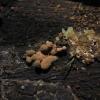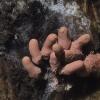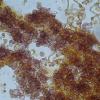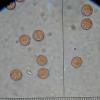
04-11-2025 09:07
Hello.A suspected Hymenoscyphus sprouting on a thi

04-11-2025 12:43
 Edvin Johannesen
Edvin Johannesen
Hi! One more found on old Populus tremula log in O

03-11-2025 21:34
 Edvin Johannesen
Edvin Johannesen
These tiny (0.4-0.5 mm diam.), whitish, short-stip

28-10-2025 15:37
Carl FarmerI'd be grateful for any suggestions for this strik

03-11-2025 16:30
 Hans-Otto Baral
Hans-Otto Baral
Hello I want to ask you if you have found this ye

28-10-2025 19:33
 Nicolas Suberbielle
Nicolas Suberbielle
Bonjour à tous,Je voudrais votre avis sur cette r

31-10-2025 09:19
 Lothar Krieglsteiner
Lothar Krieglsteiner
Can somebody provide me with a file of:Rogerson CT
 This is my second post on this forum. I know it is dedicated to ascomycota but I've seen some posts on Myxomycota. I am requesting help on a Myxo. If this is not allowed on ascofrance, kindly let me know. I also plan to submit microfungi like Penicillium, Mucor, etc which I believe they are fine since they velong to Ascomycota.
This is my second post on this forum. I know it is dedicated to ascomycota but I've seen some posts on Myxomycota. I am requesting help on a Myxo. If this is not allowed on ascofrance, kindly let me know. I also plan to submit microfungi like Penicillium, Mucor, etc which I believe they are fine since they velong to Ascomycota.My specimen was in large numbers on a dead fallen branch, Shortly stipitate, pastel-pink, cylindrical, approx 2-4mm x 1mm, leaving a pale brown peridium when spores are liberated. Stipe very short, 0.5mm.
Spores circular, 7-8um
Cell of peridium? (or calyculus) shown in image #4 are 14-17um diameter with a yellow amorphous body. These cells rapture easily.
Capillitium with inflated ends, ovoid-capitate; with rims encircling half the diameter (4-5um), yellow under light microscope, quite elastic, but loosly attached to capitulum (in my opinion... to double check)

Personnellement je verrais plutôt dans le grnre Arcyria, par ex. A.virescens.
Cordialement.
Michel
http://www.google.fr/imgres?imgurl=http%3A%2F%2Fslimemold.uark.edu%2Fimages%2Fpictures%2Fmartin%2F96arcyriavirescens.jpg&imgrefurl=http%3A%2F%2Fslimemold.uark.edu%2Fmartin.htm&h=600&w=800&tbnid=i8UbZ-OyAwFxEM%3A&zoom=1&docid=qxk2eTqc4b9HQM&ei=0A4RVdWYN9XvaJWJgZAM&tbm=isch&iact=rc&uact=3&dur=1062&page=1&start=0&ndsp=27&ved=0CCAQrQMwAA
il manque trop de details pour être certain de l'espèce mais je pense qu'il faut aller dans la direction de Arcyria denudata, A. incarnata, A.major ou A. minuta si on tient compte de la dimension des spores.
Jacky

Hello together,
this Arcyria has a capillitium totally soluble from the calyculus (peridium) and rather pale red colour. This features are typical to A. incarnata. A. major has a strongly expanding capillitium which is brillant pink, A. denudata is dark red and has a capillitium not soluble from the peridium.
Yours, Lothar
P.S. Tubulifera has no capillitium at all (Liceales)

Thank you very much for your replies and education. I had seen tubilifera looking similar on google images and garasped on it. Now I found a key to Orders/families(/genera), and of course it is Trichiales with its true capillitium. I also found a key for Arcyria and it had keyed as A. incarnata. Good job and thanks again.
I have two question please (you can answer in French ;-) )
1) What are the structures in photo 4 please? Like small amorphous crystals in a thin-walled cell? think they were towards the base and so maybe (?) calyculus tissue?
2) How woud you distingusih between a persistent not soluble capillitium net and capillitium totally soluble from the calyculus ?

Dear Stephen,
1) What are the structures in photo 4 please? Like small amorphous crystals in a thin-walled cell? think they were towards the base and so maybe (?) calyculus tissue?
... first: Myxos do not have a tissue. The only thing that are cells in myxo fruitbodies are the spores. Myxo plasmodia, their vegetative stage, are one large cell with many nuclei. So, cell borders are missing also in the fruitbodies.
2) How woud you distingusih between a persistent not soluble capillitium net and capillitium totally soluble from the calyculus ?
The best is blowing. In A. incarnata you will be able to push the capillitium to anywhere, and only the cup remains - as is visible in your foto. In A. denudata you can blow and blow and blow and blow - and the sporocarp remains as it was, only losing some spores.
Yours, Lothar
P.S. Sorry, I am not able to write in French - ...





